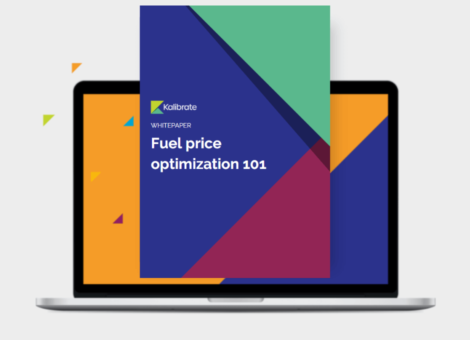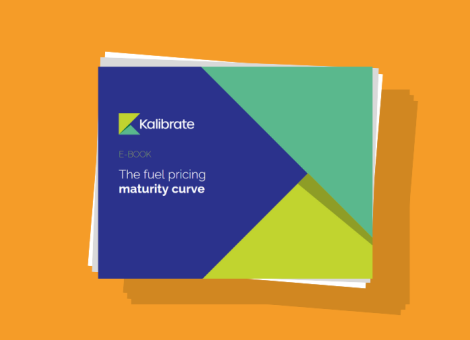Rethinking fuel pricing strategy as sales decline

In today’s fuel retail environment, declining sales volumes are the new normal. While some individual markets are still expanding, industry-wide reports consistently show that overall, total gallons sold are trending downward — driven by a mix of changing consumer behavior, growing fuel efficiency, and the gradual shift toward electric vehicles.
But while the decline itself is well understood, fuel retailers are now asking a more nuanced question: How do I know if I’m outperforming the competition?
Success is no longer just about tracking volume — it’s about understanding market share, refining pricing strategy, and embracing data-driven insights to compete smarter.
Performance isn’t just about gallons — it’s about share
Retailers understand that chasing a universal growth target, like the outdated “3% year-over-year” benchmark, is no longer realistic. Instead, success today is measured by relative performance. Retailers want to know: am I losing more, or less, than others in my market?
Many fuel retailers subscribe to data platforms for market share analysis which can provide directional guidance, but they often come with limitations. Data may not reflect individual site-level performance, or may generalize across brands and regions, making it difficult to translate insights into actionable strategy in your specific markets.
Deeper, localized intelligence platforms like Kalibrate Fuel Planning or Kalibrate Market Intelligence can really come into play, But while not everyone has access to these performance insights, there are ways to use fuel pricing insights to make moves to improve market share.
From blanket pricing to pinpoint precision
In an era of declining demand, being the cheapest in town by a penny isn’t enough.
Retailers are realizing that a one-size-fits-all pricing strategy no longer works. The real challenge lies in optimizing price at the site level, factoring in local competition, customer behavior, and margin opportunities.
For example, retailers with a low-price brand image may have historically set the lowest prices market-wide. But today, they’re starting to ask: Can I still hit volume targets without giving away margin unnecessarily? Could I charge more for midgrade and premium products to make up for lost gallons? Can I selectively match competitors only where it really matters?
These questions can be answered through data — specifically, through science-based insights like price sensitivity and elasticity.
Smarter pricing through scientific insight
Kalibrate Fuel Pricing provides science insights, designed to equip fuel retailers with the tools they need to make smarter, more granular pricing decisions. These insights go far beyond traditional competitor surveys or static benchmarks. They provide real-time, actionable intelligence in four key areas:
- Volume forecasting
See how today’s price changes could impact tomorrow’s volume. Volume forecasts allow users to test different price positions and calculate the impact on volume outcomes — before committing to a strategy. This gives retailers a forward-looking view to make informed decisions to balance volume and margin. - Site sensitivity
Understand how much your own price moves impact your site’s performance. Some sites are highly sensitive — where a 1-cent increase could mean a significant loss in volume — while others can absorb price changes more easily. Knowing the difference lets you price with confidence, not guesswork. - Brand sensitivity
Identify which competitors are truly influencing your customers. Instead of always matching or undercutting the lowest pump price, brand sensitivity reveals which competitor price moves are actually affecting your volume. This helps refine your competitive set and avoid reacting to irrelevant pricing. - Network-level insights
Whether you manage 10 sites or 1,000, Kalibrate’s insights let you zoom in and out — tracking trends across your entire network while also drilling down into individual site performance. This enables a tiered approach to strategy: start with the worst performers, address outliers, and gradually elevate your whole network’s performance.
A more focused, effective pricing approach
Trying to adjust everything at once can be overwhelming. But retailers don’t need to revamp their entire pricing strategy overnight. Instead, they should start with high-impact actions — targeting underperforming sites, testing price scenarios, and refining competitor focus using data they already have access to through Kalibrate.
As more retailers fight for fewer gallons, competitive advantage will go to those who are more informed, more agile, and more precise. Fuel pricing is no longer just about being cheaper — it’s about being smarter.
If you’re already using Kalibrate Fuel Pricing, make sure you’re tapping into science insights. And if you’re not, now might be the time to explore how these tools can give you the edge your competitors don’t have.
Read more articles about:
Fuel pricingSubscribe and get the latest updates
You may unsubscribe from our mailing list at any time. To understand how and why we process your data, please see our Privacy & Cookies Policy
Related resources
Fuel pricing
Fuel price optimization 101
This whitepaper explains all the basic principles and concepts of AI and data science and it's application in fuel...

Fuel pricing
The fuel pricing maturity curve
Fuel pricing maturity is not about the size of your business – it’s about the efficiency of your fuel pricing...


